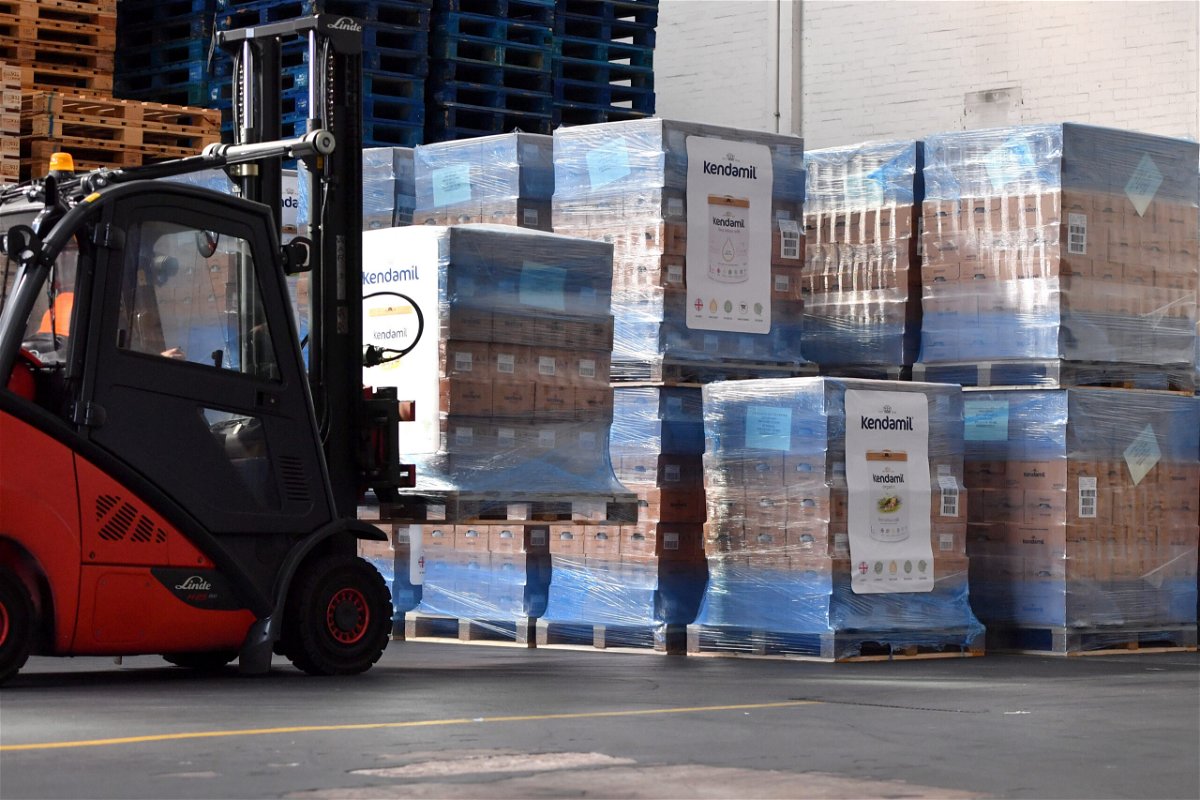Why aren’t baby formula stock rates getting better?

Dozens of international flights loaded with baby formula have already come into the United States
By Deidre McPhillips, CNN
Dozens of international flights loaded with baby formula have already come into the United States, but formula stock rates are not improving. Experts say it will take at least another couple months for this to change, as both supply levels and consumers’ perspectives level out.
Through Operation Fly Formula, the White House has committed to import enough formula to make the equivalent of about 40 million 8-ounce bottles.
More than a quarter of that supply — enough to make 13 million bottles — has already been delivered as of June 19, according to a statement from the US Department of Human Services.
Still, stock rates for formula continue to hit new lows, according to data shared with CNN by market research firm Information Resources Incorporated, or IRI.
More than 21% of formula products — powder, ready-to-drink and liquid — were out of stock during the week ending June 19, compared with a typical rate of 10% before a nationwide infant formula recall by Abbott Nutrition happened in February.
Stock rates for powder formula, specifically, are even worse. More than 27% of powder formula products were out of stock during the week ending June 19, up from 25% the prior week and 23% the week before that, IRI data shows.
“Our goal remains ramping up supply and moving it to retail shelves and warehouses as quickly as possible,” Kevin Munoz, a White House spokesperson told CNN, citing Operation Fly Formula efforts along with ramp ups afforded by the Defense Protection Act and increased flexibilities from the US Food and Drug Administration.
The Operation Fly Formula deliveries are not enough to completely replenish formula supply — they cover just a few days of typical sales.
But the Biden administration isn’t just watching stock rates. They’re also watching formula sales, which jumped 24% in late May.
The administration reasons that for sales to increase that much, it follows that there must be enough supply to support the demand.
Experts, however, say that formula sales are typically very consistent, and this increased demand is evidence that consumers are likely stockpiling formula, potentially perpetuating the shortage.
“Clearly babies don’t need thousands of extra bottles in one month,” said Ram Ganeshan, a professor at William & Mary whose research focuses on supply chain management and logistics strategy.
“So there is a 24% increase in demand that is unexplained. My guess is that people are hearing about the shortage and making sure they have enough on their kitchen shelves. They’re buying more than normal.”
The out-of-stock rate is the fraction of time that somebody went to the store and didn’t find what they were looking for, said Sridhar Tayur, a professor of operations management at Carnegie Mellon University.
Without a clear end in sight to the shortage, families might “over buy” and pick up enough formula for two or four weeks when they typically only buy enough for one week, he said.
“So the first few people will go there and they’ll buy up twice as much as normal, which means only half the families will get it.”
Some stores such as CVS, Walgreens and Target have placed limits on how much baby formula customers can purchase. But as stockpiling continues, many families will continue to see empty shelves and experience a shortage of formula products, experts say.
At the same time, manufacturers are focusing their production on specialty formulas that were at the heart of the recall and, in turn, limiting the number of other options they make available.
“The smaller packs of formula are not being produced right now,” said Krishnakumar Davey, president of client engagement at IRI.
This limits the options consumers see available on shelves and affects the stock rates. Families who might typically buy smaller packs of formula might opt for larger packs simply because that’s what’s available, which might also contribute to the spike in sales volume, he said.
Tayur has consulted with the White House on strategies to improve formula stock. He said they’ve discussed the critical need for predictability as the country resets — for consumers to trust that the formula they need will be on the shelf each time they look for it.
“Predictability of supply affects the psychology of the buyer so that they don’t create unnecessary spikes in our demand,” he said.
Despite some setbacks — such as the flooding that halted production at the plant just after reopening and a global supply chain that continues to face challenges — experts agree that relief is coming.
And in the meantime, the Operation Fly Formula shipments can be an important psychological boost for consumers, experts say, even if they aren’t replenishing an overwhelming amount of physical product.
“This is like a boom and bust cycle,” Ganeshan said.
“Right now, we don’t have much and then we do all these things (like scaling up production at US plants and bringing in more imports through Operation Fly Formula). By the end of August, September, shelves are going to be full again. I think that’s when this is going to finally relieve itself.”
The-CNN-Wire
™ & © 2022 Cable News Network, Inc., a WarnerMedia Company. All rights reserved.